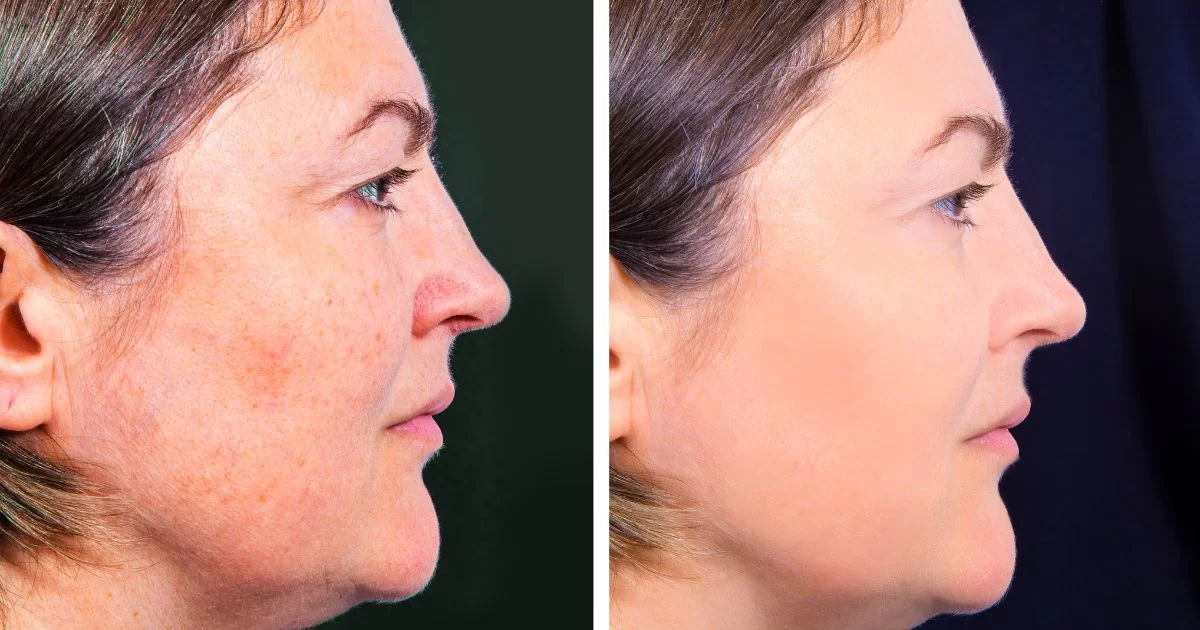The Global Patient Engagement Solutions Market is undergoing a significant transformation, driven by the rapid adoption of technology and the growing demand for more patient-centered care. A critical player in this transformation is the global patient engagement solutions market, which attained a value of approximately USD 22.74 billion in 2023. With the increasing need for effective communication between healthcare providers and patients, this market is expected to expand further in the coming years. Projections indicate that the market will grow at a CAGR of 17.10% from 2024 to 2032, reaching an estimated value of USD 94.17 billion by 2032.
Table of Contents
ToggleIn this article, we explore the factors driving the growth of the patient engagement solutions market, the key trends shaping its future, and how these solutions are reshaping the healthcare landscape globally.
What Are Patient Engagement Solutions?
Patient engagement solutions refer to a variety of technologies and tools that enable healthcare providers to interact more effectively with patients. These solutions are designed to empower patients with the information and resources they need to manage their health better, ensuring active participation in their own healthcare journeys. Common examples include patient portals, mobile health apps, telehealth platforms, and automated communication systems, all aimed at enhancing patient-provider interactions.
These tools not only help in improving health outcomes but also play a crucial role in reducing healthcare costs, improving patient satisfaction, and enhancing the efficiency of healthcare services.
Get a Free Sample Report with Table of Contents: https://www.expertmarketresearch.com/reports/patient-engagement-solutions-market/requestsample
Market Overview
In 2023, the global patient engagement solutions market was valued at USD 22.74 billion, driven by technological advancements and a shift towards patient-centered care. The growing importance of value-based care models, government initiatives supporting healthcare IT adoption, and the rising prevalence of chronic diseases are key factors contributing to this robust growth.
Looking forward, the market is expected to witness a compound annual growth rate (CAGR) of 17.10% from 2024 to 2032, which will push its value to approximately USD 94.17 billion by 2032. This impressive growth can be attributed to several factors, including increasing healthcare digitization, the rising adoption of wearable devices, and growing demand for telehealth services.
Key Drivers of Growth
- Technological Advancements in Healthcare
- The integration of advanced technologies such as Artificial Intelligence (AI), Machine Learning (ML), and Big Data analytics has revolutionized patient engagement solutions. These technologies allow for personalized care, predictive analytics, and better management of patient data. AI-powered chatbots, for example, can provide 24/7 assistance, answering patient queries and helping with appointment scheduling.
- Telehealth platforms have also gained significant traction, especially after the COVID-19 pandemic, as they offer convenience and reduce the need for in-person visits. This has expanded access to healthcare services, particularly in remote or underserved areas.
- Rising Prevalence of Chronic Diseases
- The global rise in chronic conditions such as diabetes, heart disease, and cancer has increased the demand for patient engagement solutions. These conditions require ongoing monitoring and patient adherence to treatment plans. Tools like mobile health apps help patients track their health metrics and stay connected with their healthcare providers, which ultimately leads to better disease management.
- The need for continuous care and the growing aging population have also pushed healthcare systems to adopt solutions that streamline patient care management.
- Government Initiatives and Policies
- Governments worldwide are actively promoting the adoption of healthcare IT solutions to improve patient care. In the United States, for instance, programs like the Medicare Access and CHIP Reauthorization Act (MACRA) incentivize healthcare providers to use patient engagement tools to enhance care quality.
- In Europe, various countries have introduced digital health initiatives that encourage the use of technology in patient care. The European Union’s Digital Health Europe program, for example, aims to integrate digital health innovations to benefit patients across the region.
- Growing Demand for Personalized Healthcare
- Patients today expect personalized experiences in their healthcare interactions. This has spurred the development of engagement solutions that cater to individual patient needs and preferences. Through mobile apps and online portals, patients can access tailored health information, receive reminders for medications, and manage appointments easily.
- Increased Focus on Preventive Care
- Preventive healthcare is becoming more central to patient engagement strategies. Patient engagement tools allow healthcare providers to track patient behavior, offer preventive advice, and provide early interventions. This shift from reactive to proactive care has contributed significantly to the growth of this market.
Read Full Report with Table of Contents: https://www.expertmarketresearch.com/reports/patient-engagement-solutions-market
Key Market Trends
- Shift Towards Cloud-Based Solutions
- The adoption of cloud-based patient engagement platforms is on the rise, as they offer enhanced flexibility, scalability, and security. Cloud-based solutions allow healthcare organizations to store and manage vast amounts of patient data more efficiently. Moreover, these platforms enable seamless access to information from multiple locations, which is particularly beneficial for large healthcare networks.
- Integration with Electronic Health Records (EHRs)
- EHR integration is a major trend shaping the patient engagement solutions market. By integrating patient engagement tools with EHRs, healthcare providers can offer more comprehensive and coordinated care. Patients can easily access their medical records, treatment history, and lab results, leading to improved patient satisfaction and better health outcomes.
- Rise of Telemedicine
- Telemedicine has become an essential component of patient engagement, providing patients with access to healthcare services from the comfort of their homes. The convenience and cost-effectiveness of telehealth have made it a popular choice for both patients and providers. The continued adoption of telemedicine will further drive the growth of patient engagement solutions in the future.
- AI and Data Analytics
- Artificial Intelligence (AI) and data analytics are playing an increasingly important role in enhancing patient engagement. AI can be used to predict patient behaviors, identify potential health risks, and provide personalized recommendations. Data analytics tools, on the other hand, help healthcare providers gain insights into patient preferences and outcomes, enabling them to optimize engagement strategies.
Regional Insights
North America
North America dominated the patient engagement solutions market in 2023 and is expected to maintain its leading position throughout the forecast period. The presence of major healthcare IT companies, high healthcare expenditure, and supportive government initiatives in the United States and Canada contribute to the region’s dominance. The adoption of EHRs, patient portals, and telehealth platforms is particularly widespread in this region, driven by the growing demand for value-based care.
Europe
Europe is another significant market for patient engagement solutions, with countries like Germany, France, and the United Kingdom leading the way in healthcare digitization. The region’s aging population and rising incidence of chronic diseases have increased the need for efficient patient management systems. Furthermore, government-backed initiatives like the European Health Data Space are expected to fuel the market’s growth.
Asia Pacific
The Asia Pacific region is expected to experience the fastest growth in the patient engagement solutions market during the forecast period. Countries like China, India, and Japan are investing heavily in healthcare infrastructure and technology. The region’s large patient population and increasing healthcare awareness are driving the demand for patient engagement tools. Telemedicine and mobile health apps are particularly popular in this region, offering affordable healthcare solutions to underserved populations.
Challenges Facing the Patient Engagement Solutions Market
While the patient engagement solutions market is poised for significant growth, it also faces several challenges:
- Data Security and Privacy Concerns
- The increasing digitization of healthcare data raises concerns about data security and patient privacy. Cybersecurity threats and the potential for data breaches are major challenges for healthcare organizations, which must ensure that patient information is protected.
- Interoperability Issues
- Healthcare organizations often use multiple systems that may not be fully compatible with each other. The lack of interoperability between different healthcare IT solutions can hinder the seamless exchange of patient data, limiting the effectiveness of patient engagement tools.
- High Implementation Costs
- Implementing and maintaining patient engagement solutions can be expensive, particularly for smaller healthcare providers. The high upfront costs and the need for ongoing maintenance and training may deter some organizations from adopting these solutions.
Future Outlook and Opportunities
The future of the patient engagement solutions market looks promising, with several opportunities on the horizon:
- Expansion of Telehealth Services
- The demand for telehealth services is expected to continue rising, creating new opportunities for patient engagement solutions that integrate telemedicine platforms.
- Wearable Health Devices
- The growing popularity of wearable devices such as fitness trackers and smartwatches offers new ways for patients to engage with their healthcare. These devices can monitor vital signs and provide real-time data to healthcare providers, enabling more personalized care.
- AI-Driven Solutions
- AI will play an increasingly important role in the future of patient engagement. AI-powered tools can help healthcare providers identify high-risk patients, predict health outcomes, and provide personalized treatment plans.
The global patient engagement solutions market is experiencing remarkable growth, driven by advancements in healthcare technology, government initiatives, and a shift towards patient-centered care. As healthcare systems around the world continue to evolve, the adoption of patient engagement tools will become increasingly essential in improving health outcomes, reducing costs, and enhancing patient satisfaction.
By 2032, the market is expected to reach a value of USD 94.17 billion, fueled by a compound annual growth rate of 17.10%. While challenges such as data security and high implementation costs remain, the future of patient engagement solutions is bright, with significant opportunities for innovation and growth.
FAQs
1. What are patient engagement solutions?
- Patient engagement solutions are technologies and tools that facilitate effective communication between healthcare providers and patients, enabling patients to actively participate in their healthcare.
2. What factors are driving the growth of the patient engagement solutions market?
- Key drivers include technological advancements, the rising prevalence of chronic diseases, government initiatives, and the increasing demand for personalized healthcare.
3. What are the key challenges facing the patient engagement solutions market?
- Challenges include data security and privacy concerns, interoperability issues, and high implementation costs.
4. What is the projected market size for patient engagement solutions by 2032?
- The market is expected to grow at a CAGR of 17.10%, reaching approximately USD 94.17 billion by 2032.
5. Which regions are leading the patient engagement solutions market?
- North America currently leads the market, followed by Europe and the Asia Pacific region.
About Us
Acquire unparalleled access to critical industry insights with our comprehensive market research reports, meticulously prepared by a team of seasoned experts. These reports are designed to equip decision-makers with an in-depth understanding of prevailing market trends, competitive landscapes, and growth opportunities.
Our high-quality, data-driven analysis provides the essential framework for organisations seeking to make informed and strategic decisions in an increasingly complex and rapidly evolving business environment. By investing in our market research reports, you can ensure your organisation remains agile, proactive, and poised for success in today’s competitive market.
Don’t miss the opportunity to elevate your business intelligence and strengthen your strategic planning. Secure your organisation’s future success by acquiring one of our Expert Market Research reports today.
Media Contact
Company Name: Claight Corporation
Contact Person: James william, Corporate Sales Specialist
Email: sales@expertmarketresearch.com
Toll Free Number: +1-415-325-5166 | +44-702-402-5790
Address: 30 North Gould Street, Sheridan, WY 82801, USA
Website: www.expertmarketresearch.com
Related Trending Reports
https://www.expertmarketresearch.com/reports/antiplatelet-drugs-market
https://www.expertmarketresearch.com/reports/drug-discovery-and-development-solutions-market
https://www.expertmarketresearch.com/reports/operating-table-market




